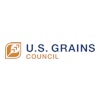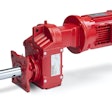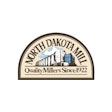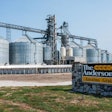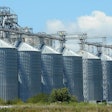
Rural roads and bridges serve as the initial link in the overall supply chain – allowing the soybeans and grain produced on a farm to be eventually consumed by both domestic and international customers. Of the bridges in the country classified as deficient and, in many cases, subject to closures or restricted access, a significant percentage are located in rural areas.
“我们国家的农村桥梁作为最初的年代tep in a lengthy journey to the ultimate customer,” explains Mike Steenhoek, executive director of the Soy Transportation Coalition (STC). “Unfortunately, the region of the country in which bridge conditions are most severe – rural areas – also happen to be the region in which available funding to improve these conditions is stagnant or on the decline. The concern remains that if this starting line for farmers is not well-maintained, soybeans and grain will not effectively reach the finish line in delivering to our customers.”
Given the significance of this need and the limited resources to address it, a potential response by bridge owners is to simply close or restrict access to existing bridges or hope federal, state, or local government will be willing and able to supply the necessary revenue. While pursuing increased investment is appropriate and closing or placing restrictions on certain rural bridges may be prudent, increased energy and attention must be devoted to addressing the cost side of the equation and making existing tax dollars stretch further.
In the effort to promote more cost-effective approaches to replacing and repairing rural bridges without compromising safety, the STC has released the report, “The Top 20 Innovations for Rural Bridge Replacement and Repair.” The report features the following ten rural bridge replacement and ten rural bridge repair innovations.
Bridge Replacement Innovations
- Railroad Flat Car Bridges
- Geosynthetic Reinforced Soil – Integrated Bridge System (GRS-IBS)
- Vibratory H-Piling Drivers
- Buried Soil Structures
- All Steel Piers
- Galvanized H-Piling
- Press Brake Tub Girders
- Galvanized Steel Beams
- Prestressed Precast Double Tees
- Precast Inverted Tee Slab Span Bridges
Bridge Repair Innovations
- Piling Encasements
- Concrete Pier Piling Repairs
- Driving Piling through Decks
- Epoxy Deck Injections
- Deck Overlays with Type O Concrete and Plasticizers
- Deck Patching
- Thin Polymer Concrete Overlays
- Penetrating Concrete Sealers
- Spot Cleaning Painting Steel Beams
- Concrete Overlay on Adjacent Box Beams
“Many of the innovative concepts featured in this report can result in a 50% or greater cost savings for rural counties,” says Jonathan Miller, a soybean farmer from Island, Kentucky, and chairman of the Soy Transportation Coalition. “This can easily result in replacing a bridge for $100,000 to $150,000 compared to the prevailing method of $250,000 to $400,000. Farmers understand with their own operations that simply spending our way out of a problem will rarely be successful. We also need to embrace innovative ways to save our way out of a problem. This approach that works so well on the farm also applies to maintaining and improving our infrastructure.”
In order to select the featured innovative concepts, the STC assembled a group of 13 bridge engineers and experts (listed below) from the 13 states that comprise the organization. Three engineers served as principal analysts for the project with the remaining ten engineers or experts serving as advisory committee members.
The innovative concepts for bridge replacement and repair featured in the project are not an exhaustive and comprehensive catalog. Numerous other innovative concepts exist and are worthy of being explored. The goal of the principal analysts and advisory committee members was to highlight a relatable number of innovative concepts that will provide initial or lifecycle cost savings, have been validated by a credible engineering entity or organization, and are accessible in a large section of rural America.
The featured bridge replacement and repair concepts reflect the broad consensus of the principal analysts and advisory committee members. Readers should not assume the bridge replacement and repair concepts featured in the above list are in complete alignment with the lists of each individual principal analyst or advisory committee member.
A document highlighting the innovate bridge replacement and repair concepts, expected cost and time savings, and links to validating research can be accessed atsoytransportation.org.


